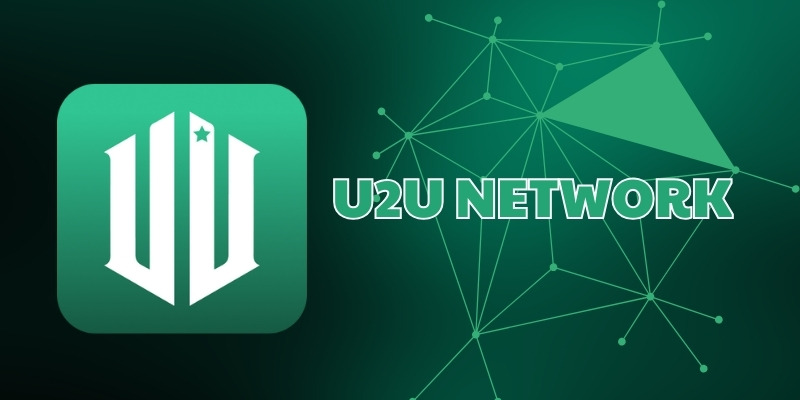U2U Network is a new Layer 1 blockchain platform that stands out due to its use of advanced technologies such as Directed Acyclic Graph (DAG), the Helios consensus mechanism, and Subnetting. You might be wondering, exactly how does U2U Network work, and why is this platform attracting attention in the blockchain community? Let’s explore together!
Basic information about U2U Network
U2U Network is a prominent Layer 1 blockchain platform that utilizes cutting-edge technologies like Directed Acyclic Graph (DAG) and the Helios consensus mechanism. The platform is designed to address scalability issues, transaction speed, and cost on traditional blockchains, while also providing effective solutions for applications in sectors such as the Internet of Things (IoT), decentralized storage, and wireless networks.
U2U was founded by a team with extensive experience in blockchain and technology. Their goal is to create a scalable blockchain network that does not compromise on performance or transaction costs, meeting the demands of decentralized applications and services.
How does U2U Network work?
U2U Network operates on DAG (Directed Acyclic Graph) technology and Helios consensus mechanism, creating an efficient and scalable blockchain ecosystem with low transaction costs.
Directed Acyclic Graph (DAG)
Directed Acyclic Graph (DAG) is a data structure that differs from traditional blockchain. DAG allows transactions to be processed in parallel rather than in sequential order like traditional blockchains. This helps reduce network congestion and optimizes transaction speeds. DAG is particularly effective in networks with high transaction volumes, as each transaction can be processed independently without waiting for others.
U2U Network’s DAG brings an efficient ecosystem capable of handling a massive number of transactions without increasing costs, making it superior to traditional blockchains.
Helios consensus mechanism
The Helios consensus mechanism is the key differentiator of U2U Network compared to other blockchains. Optimized from the Proof of Stake (PoS) method, Helios provides an energy-efficient solution that reduces transaction costs. This not only enhances the network’s efficiency but also ensures high security, ensuring that transactions are always verified and executed accurately.
Helios combines security elements to protect the U2U from external attacks while maintaining fast and efficient transaction processing.
Subnetting – Network segmentation technology
Subnetting is a crucial feature of U2U Network that helps optimize scalability. Instead of building a single network, U2U divides the network into smaller subnets, each optimized for specific purposes. This reduces congestion and costs since each subnet only uses the necessary resources for its intended purpose.
Subnets can be optimized for IoT applications, decentralized storage, and GPU computing, creating a flexible and rapidly scalable ecosystem.
Advantages and disadvantages of U2U Network compared to traditional Blockchains
U2U Network offers several outstanding advantages over traditional blockchain platforms, but it also has some limitations that need to be addressed in the future.
Advantages of U2U Network
Outstanding scalability: Using DAG, U2U can process millions of transactions per second without congestion. This is particularly useful in fields like IoT, where millions of devices need to be connected and communicate quickly.
Low transaction costs: Thanks to the Helios consensus mechanism and DAG network structure, U2U minimizes transaction costs, providing significant benefits for users and developers, especially in DeFi applications and decentralized storage.
High security: The Helios consensus mechanism helps U2U maintain security without increasing energy consumption, thereby reducing the risk of network attacks and protecting transactions within the network.
Disadvantages of U2U Network
Low popularity: Although U2U boasts many technological advantages, the platform is still relatively new compared to large blockchains like Ethereum or Bitcoin. This may pose challenges for U2U in attracting users and developers.
Lack of dApps: As a new platform, the number of dApps (decentralized applications) developed on U2U is still limited compared to more established blockchains. This could be a barrier to the platform’s growth in the future.
Applications of the U2U Network platform
U2U Network can be applied across various industries due to its scalability and low transaction costs. Some of the prominent applications include:
Internet of Things (IoT): U2U Network is an ideal platform for IoT applications, where millions of devices need to be connected and exchange data. Thanks to its ability to process millions of transactions per second without sacrificing performance, U2U can provide robust infrastructure for IoT applications.
Decentralized wireless networks: One of the key applications of U2U Network is in building decentralized wireless networks. U2U enables the creation of automated wireless networks, reducing costs and making it easier to deploy in hard-to-reach areas.
Decentralized storage: With U2U Network, data can be stored securely and efficiently, providing better security and reducing costs compared to traditional storage solutions like Google Drive or Dropbox.
Decentralized Finance (DeFi): DeFi dApps can leverage the high transaction speed and low cost of U2U Network to build advanced financial services, including lending, borrowing, and digital asset exchanges without the need for financial intermediaries.
U2U Network is not only an advanced blockchain platform but also a potential solution to address the challenges of traditional blockchains, such as scalability and transaction costs. By utilizing DAG, Helios Consensus, and Subnetting, U2U opens up development opportunities for applications in fields such as IoT, decentralized storage, and DeFi. According to Financial Insight Daily, if you want to learn more about U2U Network, please visit our website for detailed information and the latest trends in the blockchain industry.



